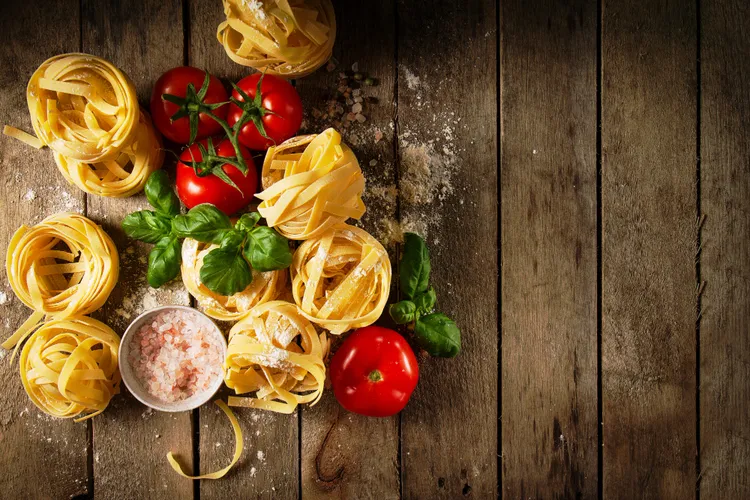How to Cook Delicious Pasta Like They Do in Italy: A Complete Guide to Authentic Italian Pasta
If you’ve ever visited Italy - or even just dined at a truly authentic Italian restaurant - you know that Italian pasta hits differently. It’s perfectly cooked, incredibly flavorful, and feels effortless yet elevated. But here’s the secret: you don’t need a plane ticket to Rome or a Nonna in the kitchen to recreate that same magic at home. In this post, we’ll walk you through everything you need to know to cook delicious, authentic Italian pasta - from choosing the right ingredients and mastering the technique to finishing it like a pro. Whether you're making a quick weeknight dinner or a Sunday feast, this guide will take your pasta game to the next level.

1. Start with the Right Pasta
In Italy, pasta isn't just pasta - it’s a well-thought-out foundation of every dish.
What to Look For:
Made in Italy: Look for pasta made in Italy with 100% durum wheat semolina.
Bronze-cut: These have a rough surface that grabs onto sauces better.
Dried vs. Fresh:
Dried pasta (pasta secca) is perfect for robust sauces like Bolognese, carbonara, or arrabbiata.
Fresh pasta (pasta fresca) works best with delicate sauces like butter and sage or seafood.
2. Use Plenty of Water - and Salt It Like the Sea
The Rule:
Use at least 4-6 quarts (liters) of water for every pound (500g) of pasta, and salt it generously.
Why Salt Matters:
Salt is the only seasoning your pasta itself gets before it hits the sauce. It enhances the natural flavor and prevents bland results.
Proper salting ratio: About 1-1.5 tablespoons of kosher salt per 4 quarts of water.
Italian Tip: “L’acqua della pasta deve essere salata come il mare.” (The pasta water must be as salty as the sea.)
3. Cook Al Dente, Always
Al dente means “to the tooth” in Italian - it should be firm when bitten, not mushy.
Why It Matters:
Al dente pasta has better texture and slower digestion (lower glycemic index).
It holds up beautifully when tossed in hot sauce, which is key to flavor absorption.
How to Know:
Start testing 1-2 minutes before the package says it’s done. The pasta should resist slightly when bitten.
4. Don’t Drain All the Pasta Water!
Pasta Water = Liquid Gold
Italian chefs don’t just dump and drain. Instead:
Use tongs or a pasta fork to lift pasta into the sauce.
Reserve 1-2 cups of pasta water before draining the rest.
Why Keep It:
Pasta water contains starch, which helps:
Thicken and emulsify sauces (especially oil or butter-based ones)
Help sauce stick to the pasta
Adjust the consistency of the final dish
5. Finish Pasta in the Sauce
Here’s one of the biggest secrets to Italian pasta: you don’t just dump sauce on top - you finish the pasta in it.
How It Works:
Once pasta is al dente, transfer it to the pan with your sauce.
Toss over medium heat for 1-2 minutes, adding pasta water as needed to loosen or thicken.
Benefits:
Helps the sauce bond with the pasta, not just coat it.
Allows flavors to meld together and feel more cohesive.
6. Choose the Right Sauce for the Right Shape
In Italy, pasta shapes aren’t random - they’re designed for specific sauces.
Matching Guide:
| Pasta Shape | Best Sauces |
|---|---|
| Spaghetti | Tomato sauces, carbonara, aglio e olio |
| Penne / Rigatoni | Chunky sauces, arrabbiata, Bolognese |
| Fettuccine | Creamy sauces, Alfredo, porcini mushroom |
| Orecchiette | Sausage and broccoli rabe |
| Fusilli / Rotini | Pesto, vegetable-based sauces |
| Pappardelle | Ragu, wild boar, short ribs |
Think of it like this: smooth pasta = smooth sauce, ridged or tubular pasta = chunky, hearty sauce.
7. Quality Ingredients Matter More Than You Think
Italian cooking is all about simplicity and quality. The fewer the ingredients, the more important each one becomes.
Essentials:
Extra virgin olive oil - Cold-pressed and fruity (look for D.O.P. or I.G.P. labels)
Real Parmigiano-Reggiano - Aged 24+ months, not the stuff in the green can
San Marzano tomatoes - For sauces like marinara or arrabbiata
Fresh garlic and herbs - Never garlic powder or dried basil
Don’t Overdo It:
In Italy, pasta dishes rarely have more than 5-6 ingredients. Let each one shine.
8. Top It the Italian Way
Skip These Common Mistakes:
No Parmesan on seafood pasta (a major faux pas in Italy)
No overloading with sauce - Italian pasta is never swimming
No drenched olive oil finish - a drizzle is enough
Garnishing Tips:
Add fresh basil or parsley at the very end
Grate cheese just before serving, not in advance
Finish with a drizzle of good olive oil or lemon zest for brightness
9. Bonus Tips from Real Italian Chefs
✔ Never break spaghetti before boiling. Let it naturally soften into the pot.
✔ Undercook pasta slightly if you're baking it afterward (like in lasagna or pasta al forno).
✔ Use butter and oil together for a richer, silkier sauce base.
✔ For creamy sauces without cream: Mix grated cheese and pasta water while tossing on heat. It creates a luscious emulsion (like in cacio e pepe).
✔ Don’t rinse pasta after draining - this removes the starch and makes it harder for sauces to stick.
Cooking pasta like they do in Italy isn’t about fancy tricks or secret ingredients - it’s about respecting the process, choosing great ingredients, and mastering a few simple techniques. When done right, every bite can transport you to a Roman trattoria, a seaside village in Amalfi, or a rustic Tuscan kitchen.
So the next time you cook pasta, slow down, taste as you go, and give it the Italian love it deserves. Because once you’ve had real Italian-style pasta, there’s no going back.
Buon appetito!









